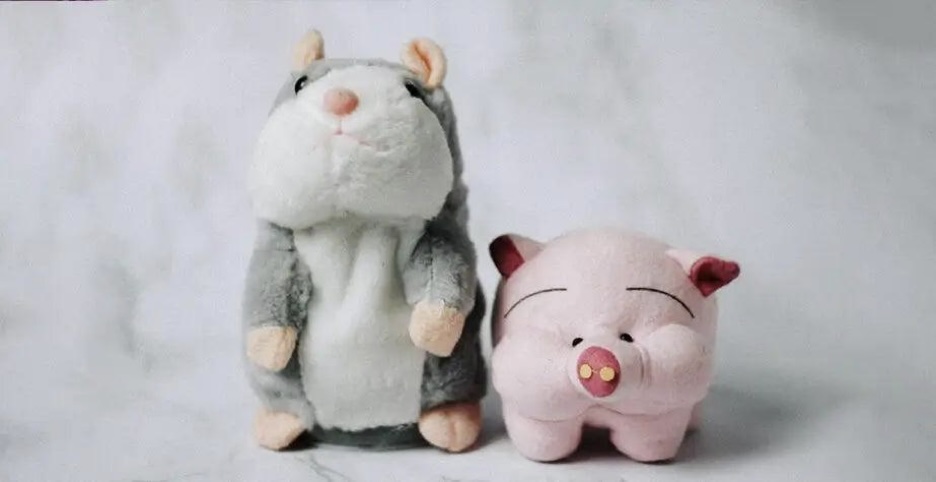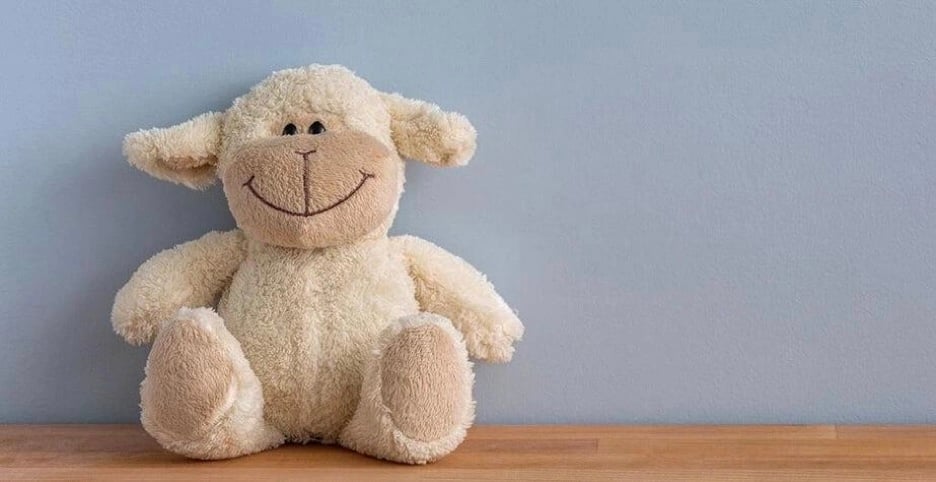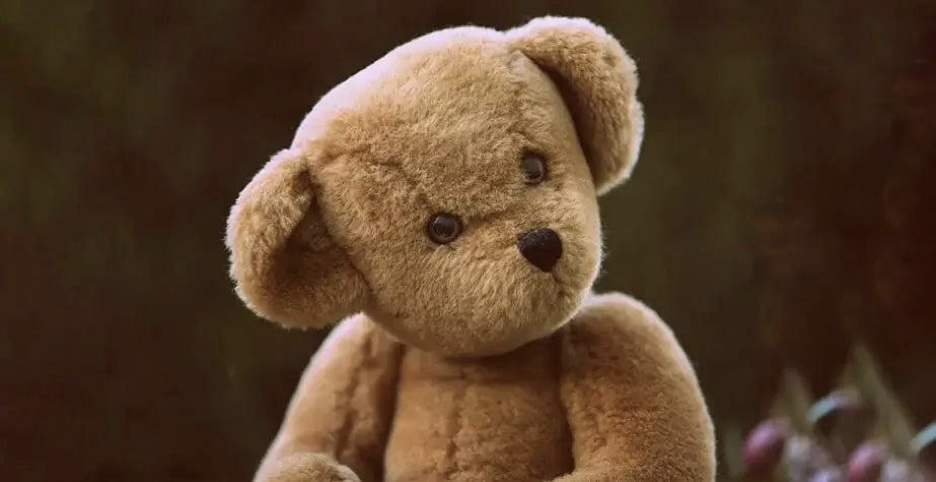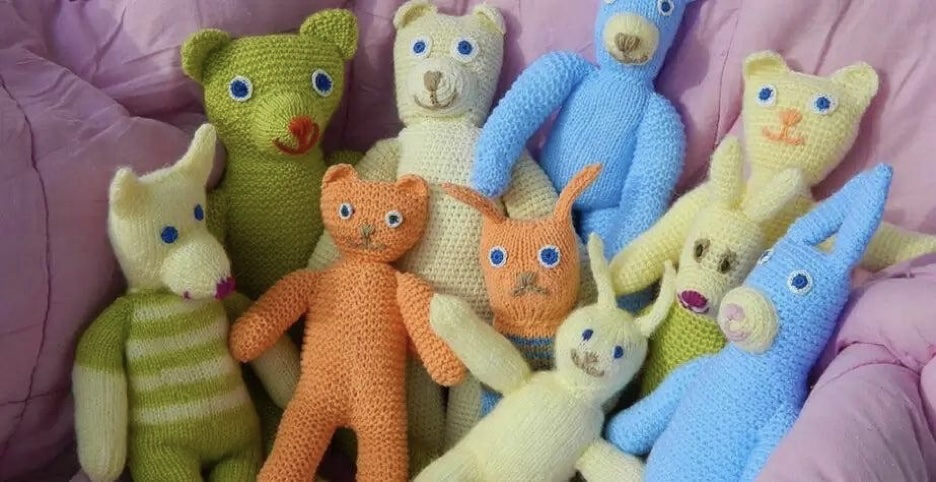When making plush toys, stuffing refers to the materials used to fill the internal space of the toy, giving it shape, texture, and softness. These materials are commonly soft and resilient fibers, such as polyester fibers, cotton, wool, etc.
The choice of stuffing is related to factors including design requirements of plush toys, production cost, feel, and safety. The stuffing’s quality and amount will affect the appearance, touch, and comfort level of the plush toy. When making a stuffed toy, its stuffing should be evenly distributed inside the toy to ensure that the whole toy is properly filled to avoid inadequate or lumpy stuffing.

Children find stuffed animals their best friends; therefore, stuffing matters a lot when it comes to the comfort and safety of plush toys. Soft and fluffy stuffings add comfortability to plush toys making them pleasant to touch. In addition, the stuffing material must conform to international standards and ensure that it does not contain any harmful chemicals which may threaten users’ health.
In this context, CustomPlushMaker will share with you different types of stuffing for plush toys and analyze their pros and cons to help you better choose the right stuffing material. Before diving into the topic, let’s learn about the importance of stuffing for plush toys.
Advantages of High-quality Stuffing for Plush Toys
Attractive Appearance
Good stuffing provides longevity and keeps the stuffed toy smooth-looking without lumps. As the stuffing is evenly distributed in all parts of the toy, the plush toy will have a more complete look.
Comfortable Feel
Good stuffing can give a plush toy a soft and cozy touch that makes people feel soothed and want to give it cuddles. The comfy stuffing should be elastic and soft enough, without feeling too rough or too loose. The right stuffing can offer strong support to the plush toy and protect users from injuries when cuddling or squeezing.
Great Durability
Good stuffing can make the plush toy more durable. It can maintain the shape and texture of the plush toy for a long time without being easily deformed or hollowed. Even after long-term use, the stuffed toy won’t easily lose its softness and elasticity.

High Safety
Good stuffing can enhance the safety of the plush toy because it does not contain harmful chemicals that have negative health effects on the human body. What’s more, using high-quality stuffing can reduce the possibility of allergic issues and protect users from having allergic reactions.
Brand Image Building
Top-notch stuffing can not only help your business stand out but also create a positive brand image. The brands get momentum and praise for their high-quality products, and customers can be easily convinced to buy and recommend the brand’s products.
Being Competitive in the Market
In a result-oriented market ecosystem, delivering outstanding plush toys can be a crucial factor in creating a unique brand. The consumers who prefer good quality and brand reputation will choose a plush toy of better quality. Hence, brands will compete in the market by using high-quality stuffing for plush toys.
Sales Growth
If the brand has a good reputation and premium products, it can easily have growth in sales over time. Consumers often want to purchase products that have a good reputation, so when brands give out premium plush toys with quality stuffing customers will be attracted to the brand more, thus driving up the number of sales.
Factors to Consider When Choosing Stuffing for Plush Toys
- Safety: The stuffing must meet the necessary safety requirements and should not cause any harm by releasing chemicals or substances that are harmful to people’s health.
- Softness and comfort: The stuffing ought to be optimally soft so that the plush toy is comfortable to touch and it should be skin-friendly for users to play with.
- Elasticity and resilience: To this end, the stuffing should possess certain elasticity and resilience and be able to revert to its initial shape after long-term use without having deformation.
- Durability: The stuffing needs to be strong and hold the shape as it was, not to get too soft, hard, swept aside, or collapsed during daily use.
- Applicability: Consider the correct stuffing option based on the toy crafted and its purpose. For instance, those toys that require lighter, fluffier stuffing are not the same as those that require heavier and more solid stuffing.

- Anti-allergenic: There are certain people who may be allergic to the stuffing, so when you are choosing the fillers, this needs to be taken into consideration, especially for the children’s plush toys.
- Environmental protection: The stuffing materials should be environmentally friendly and won’t have serious negative impacts on the environment.
- Cost: To reduce production costs and increase purchase rates, always consider the affordability of the stuffing. Using cost-effective stuffing without compromising the quality will allow more consumers to buy their beloved plush toys within their budgets.
Commonly Used Stuffing for Plush Toys
Polyester
Pros: Polyester fiber, commonly referred to as PP cotton, is the most widely used stuffing for stuffed toys. It is soft and fluffy to the touch and feels comfortable. Polyester fiber is an elastic and light-weighted material that is not easy to deform and can maintain its shape well over time. Besides, polyester fiber has a hygroscopic and porous structure, which reduces the chances of getting moisture and growing bacteria inside the plush toy.
Cons: However, polyester fiber can easily accumulate dust, making the cleaning a bit challenging. In addition, polyester fiber may flatten or clump, and it is not easy to maintain the evenly stuffing condition.
Natural Cotton
Pros: Today, natural cotton, though a traditional stuffing, is still as widely utilized in plush toys. Cotton is skin-friendly, soft, and breathable, providing a comfy and warm touch for children. As a renewable natural stuffing material, natural cotton is eco-friendly.
Cons: However, cotton fiber doesn’t show up as elastic and resilient as polyester. Hence, it needs to be patted and rubbed regularly to keep it fluffy. Moreover, cotton is susceptible to moisture as it has strong water absorption, which may cause the plush toy to easily get heavy or moldy.
Memory Foam
Pros: Memory foam is another popular option for plush toy stuffing. It has excellent compression resilience and can adjust the shape based on the pressure and temperature. Therefore, it is suitable for making all kinds of custom-shaped plush toys. Memory foam can form a “memory” under pressure and then return to its original condition very quickly once the applied pressure is gone, which offers great shape retention properties and 3D features to the plush toy. Furthermore, memory foam can also give additional support and pillow-like feeling for children.
Cons: Memory foam usually has a higher price and it is a bit heavier compared to other stuffing materials.
Washed Cotton
Pros: Washed cotton refers to a kind of cotton fabric being treated or processed to become softer, reaching a more relaxed feeling, and resembling the texture of well-worn cotton garments. Washed cotton is one of the most popular choices for stuffing plush toys because of its soft and comfortable feel. In addition, washed cotton also has great breathability and anti-allergenic properties, which make it ideal for making safe and kid-friendly plush toys.
Cons: If washed cotton is not distributed uniformly, it may clump together inside the toy once it is being washed, causing uneven stuffing, and thus the toy may look unappealing and feel uncomfortable. Another weakness of washed cotton is its water absorption. Washed cotton is absorbent and if the plush toy is wet and not dried well, there is an opportunity for molds or mildew to grow.
Down Cotton
Pros: Down cotton is a premium stuffing material for stuffed toys, usually made from down feathers. It is known for its softness and fluffiness, providing coziness and warmth for plush toys. In addition, down cotton is a light-weighted material so it can make plush toys more friendly to carry around.
Cons: Down cotton is much more expensive than other stuffing materials, which may increase the production cost. What’s more, down cotton can cause some health issues as some people is allergic to natural down feathers.
Plastic Pellets
Pros: Plastic pellets, also called polyethylene pellets or polypropylene pellets, are a kind of small granule used for stuffing plush toys. Plastic pellets are suitable for making weighted plush toys as they can offer enough structural support to the plush toy. These pellets can easily fit in plush toys of various shapes and sizes and can be used for a very long time without replacement.
Cons: Plastic pellets are a bit hard to touch and cannot provide as much softness and comfort as other stuffings like polyester fiber and cotton. Besides, plastic pellets are prone to produce noise and are not suitable for making children plush toys.
Foam Particles
Pros: Foam particles are known for their light weight, softness, and elasticity, making them an ideal material for stuffing many different types of products, such as plush toys, cushions, etc. Foam particles are usually made from polyurethane foam or polystyrene foam. They are good at absorbing shock and cushioning, giving comfortable support and a soft feel to the plush toy. What’s more, due to their light weight and great moldability, foam particles can easily adapt to various shapes and sizes during the stuffing process.
Cons: Compared to cotton or polyester fibers, foam particles are not an environmentally-friendly option and may even release odor after long-term use.
Eco-friendly Stuffing for Plush Toys
Organic Cotton
Organic cotton is an organic stuffing material made from cotton grown with organic farming standards. It does not cause harm to the environment because it uses no chemical pesticides or fertilizers, which won’t have negative impacts on children’s health. Organic cotton is soft and comfortable, making it ideal for stuffing not just plush toys but also bedding.
Bamboo Fiber
Bamboo fiber is a natural fiber sourced from bamboo using a spinning process. It is innately anti-bacterial and moisture-resistant, preventing the stuffing from being damp or smelly.
What’s more, bamboo fiber is not only soft in texture but also breathable, making stuffed toys more comfortable and suitable for various climate conditions.
Recycled Polyester Fiber
Recycled polyester is a sustainable stuffing material made from recycled plastic bottles or other polyester products. It is an environmentally friendly stuffing option, which helps to reduce the amount of plastic waste and cuts the need for the new raw materials volume. The eco-friendly polyester recycled fibers can be a soft, resistant, and flexible filling for multiple products, providing cost reduction at the same time.
Tips for Stuffing High-quality Plush Toys
How do you stuff a plush evenly? How do you stuff a toy without it being lumpy? As a professional stuffed toy manufacturer, let’s show you some tricks.

1. Preparation
Make sure you have properly sewn up and sealed the plush toy to stop stuffing from leaking out before you start stuffing.
2. Choose the right stuffing material
Select correctional, uniformly distributed high-quality stuffing materials like polyester, to achieve softness and comfort.
3. Fill in batches
Add the stuffing material to the inner part of the toy in bunches. Never overstuff at one time to avoid uneven filling and clumping.
4. Fill carefully
Use fingers to push the stuffing inside the toy into different parts so that it fills all of it and there is no air left. Don’t push too hard or the toy can be damaged.
5. Regular inspection and adjustment:
Once the process is finished, check the stuffing state. If you notice some parts are underfilled or clumpy, you can use your fingers to adjust the position of the stuffing.
6. Use the stuffing tool properly
Some more small or complicated areas can be aided with a stuffing tool such as a stick or a wand. This will help push the stuffing into the toys.
7. Adjust the filling amount as needed
Make adjustments as necessary to the stuffing. For some areas of the plush toy, you need to put more stuffing inside to maintain its shape. Meanwhile, put less stuffing inside if the toy needs more softness.
8. Pay attention to the overall shape and texture
Ensure that the stuffing accommodates the toy shape while also remaining soft. Do not overstuff your toy to make it move freely and touch comfortably.
Conclusion
When choosing the right stuffing for plush toys, every manufacturer needs to consider several factors including the specifications of plush toys, the preferences of the target audience, the safety and sustainability of the stuffing materials, etc.
For example, if you are making a stuffed toy that needs to be in good shape retention, always go for an elastic and resilient stuffing like polyester or memory foam. If you focus on making plush toys for young children, softness and safety are always the priority. You’d better choose a skin-friendly and anti-allergenic stuffing. Last but not least, make sure the stuffing you choose meets all relevant safety standards so that users can play with their plush toys without worries.
Choosing a perfect stuffing for plush toys is not a simple task. But if you choose CustomPlushMaker as your partner, everything will be much easier.
Why is CustomPlushMaker Your Best Plush Toy Supplier?
As a professional plush toy manufacturer, CustomPlushMake provides a wide range of customization options. Clients can make unique plushies that are tailored to their particular needs and tastes.
Besides, with massive experience in the plush toy industry, they can offer important advice to clients, to help them achieve better results.
Quality is also the key advantage of their business. They are committed to using high-quality fabric as well as stuffing, to make sure every single plush toy they make is durable and meets the highest quality standards.
Interesting Related Article: “Benefits of Owning a Plush Blanket At Home“

